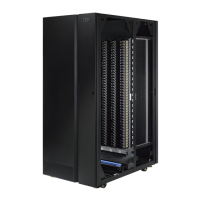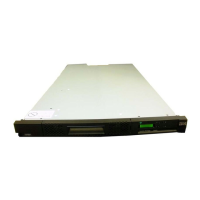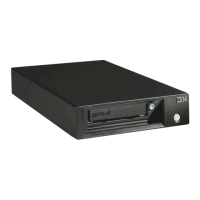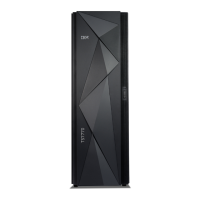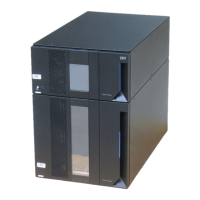automatic eject of expired cleaning cartridges through the TS4500 management
GUI by selecting Settings > Library > Cartridges.
Note: It is the operator’s responsibility to monitor the use of all cleaning cartridges
and to remove and replace expired cartridges as necessary.
LTO diagnostic cartridge
An IBM service representative uses the LTO diagnostic cartridge to ensure that the
LTO tape drives run correctly and to specification.
The LTO diagnostic cartridge is a cartridge with known good media that is
reserved for diagnostic purposes only. The diagnostic cartridge can be stored in
any frame door slot. Depending on the mixture of LTO drives that are installed in
the library, more than one LTO diagnostic cartridge might be required.
The volume serial (VOLSER) number for a diagnostic cartridge is represented as DG
IxxLy, where xx equals alphanumeric characters and y equals the generation of the
cartridge type. The characters of the VOLSER are white on a black background.
Note: Only LTO 5 and later LTO tape drives are supported in the TS4500 tape
library.
Table 45. Compatibility of diagnostic cartridges with LTO tape drives
Cartridge
generation
(y)
LTO tape drives
LTO 8 LTO 7 LTO 6 LTO 5
8 Yes No No No
7 Yes Yes No No
6 No Yes Yes No
5 No Yes Yes Yes
4 No No Yes Yes
3 No No No Yes
2 No No No No
1 No No No No
LTO bar code label
Each LTO data, cleaning, and diagnostic cartridge that is processed by the TS4500
tape library must bear a bar code label.
The bar code label contains:
v A volume serial (VOLSER) number that you can read
v A bar code that the library can read
When read by the library's bar code reader, the bar code identifies the cartridge's
VOLSER to the tape library. The bar code also tells the library whether the
cartridge is a data, cleaning, or diagnostic cartridge. In addition, the bar code
includes the two-character media-type identifier Lx (where x equals 1, 2, 3, 4, 5, 6,
7, 8, T, U, V, W, X, or Y) or M8.
v L or M identifies the cartridge as an LTO cartridge.
Chapter 2. Planning 119
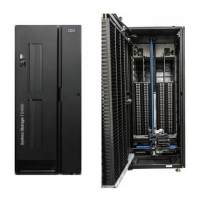
